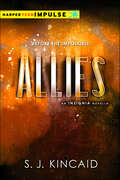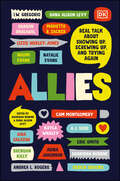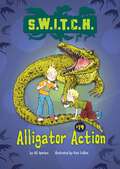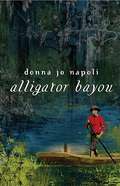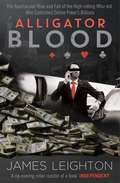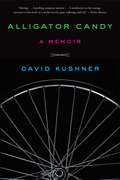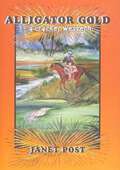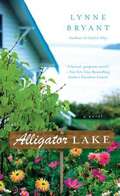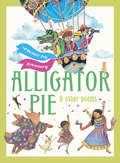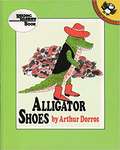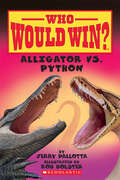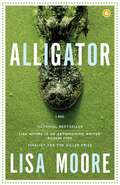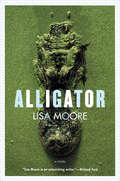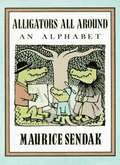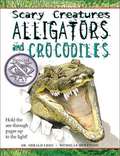- Table View
- List View
Allies: An Insignia Novella (The Insignia Novels)
by S. J. KincaidIn S. J. Kincaid's fast-paced and humorous sci-fi Insignia trilogy, the earth is in the middle of World War III when teen gamer Tom Raines is recruited to train with other young cadets as a pivotal member of the elite combat corps, the Intrasolar Forces. At the Pentagonal Spire's training academy, he makes the best friends of his life—fellow government weapons-in-training Wyatt Enslow, Vik Ashwan, and Yuri Sysevich.In this 47-page prequel novella to the series, budding genius Wyatt Enslow—intensely loyal and hyperintelligent if occasionally, hilariously, socially awkward—takes center stage as S. J. Kincaid reveals Wyatt's life before she found her place, and her own inner strength, among her devoted band of friends at the Spire.Praise for Insignia: "The characters are real, funny, and memorable. You won't be able to put this book down."—Veronica Roth, New York Times bestselling author of DivergentEpic Reads Impulse is a digital imprint with new releases each month.
Allies: Real Talk About Showing Up, Screwing Up, And Trying Again
by Dana Alison Levy Shakirah BourneThis book is for everyone. Because we can all be allies.As an ally, you use your power—no matter how big or small—to support others. You learn, and try, and mess up, and try harder. In this collection of true stories, 17 critically acclaimed and bestselling YA authors get real about being an ally, needing an ally, and showing up for friends and strangers. From raw stories of racism and invisible disability to powerful moments of passing the mic, these authors share their truths. They invite you to think about your own experiences and choices and how to be a better ally.There are no easy answers, but this book helps you ask better questions. Self-reflection prompts, resources, journaling ideas, and further reading suggestions help you find out what you can do. Because we&’re all in this together. And we all need allies. A portion of the proceeds from this book goes to supporting charities.
Allies: Why the West had to Remove Saddam
by William ShawcrossThe Cold War certainties that had seemed so fixed in the 20th Century were overturned by the war in Iraq. Saddam Hussein's Republican Guards were the battlefield victims of a brutally quick war of shock and awe. No less shocked and awed were some of America's former allies: "old" Europe, large blocks of the UN, and half the G8 nations suddenly found themselves outside the chain of command and influence. Bush, Blair, and their allies were driven by a new global vision. Their mission, expressed with great moral certainty, has been called imperialist. In fact, it was simply inevitable after 9/11: that terrible event ushered in a new era with new rules. Shawcross shows what the future will hold for Iraq, Israel, and the Middle East, how Western alliances will be changed forever, and demonstrates that the war was the definitive proof that a new era of 21st Century international politics has begun.
Alligator Action (S.W.I.T.C.H. #14)
by Ali SparkesPetty Potts has been kidnapped! Josh and Danny have to find her before it's too late. While investigating, the boys come across Petty's latest S.W.I.T.C.H. spray that can turn them into alligators. Josh and Danny soon have a date with destiny…
Alligator Bayou
by Donna Jo Napoli<P>Talullah, Louisiana. 1899. <P>Calogero, his uncles, and cousins are six Sicilian men living in the small town of Tallulah, Louisiana. They work hard, growing vegetables and selling them at their stand and in their grocery store. <P>To 14-year-old Calogero, newly arrived from Sicily, Tallulah is a lush world full of contradictions, hidden rules, and tension between the Negro and white communities. <P>He’s startled and thrilled by the danger of a ’gator hunt in the midnight bayou, and by his powerful feelings for Patricia, a sharpwitted, sweet-natured Negro girl. <P>Some people welcome the Sicilians. Most do not. <P>Calogero’s family is caught in the middle: the whites don’t see them as equal, but befriending Negroes is dangerous. <P>Every day brings Calogero and his family closer to a a terrifying, violent confrontation.
Alligator Blood
by James LeightonIn 2003, when an amateur online poker player managed to win the World Series of Poker, millions of people created accounts to try to emulate his success. Thus began online poker's transition from hobby to fully-fledged career for many players, eventually growing to become the multi-billion dollar industry it is today. Along with the amazing success stories, colourful personalities and corporate sponsors came scandal and corruption, as anti-gambling laws shut down many sites while enterprising young upstarts invented new ways to get around them. Among these was Daniel Tzvetkoff, a 26-year-old Australian who set up an online service to disguise gambling revenues as legal payments. His website made him one of the richest people in Australia almost overnight, but his playboy lifestyle was not to last. Faced with lawsuits from all sides, as well as criminal investigations, he struck up a deal with the FBI in order to save his skin, one which would shake the online poker industry to its core.
Alligator Blood: The Spectacular Rise and Fall of the High-rolling Whiz-kid who Controlled Online Poker's Billions
by James LeightonDaniel Tzvetkoff was just another Brisbane teenager working for peanuts at Pizza Hut and spending much of his spare time glued to his computer. When he worked out a new method of payment processing, the online poker companies came running to him for help so they could grow their businesses. Soon he was living the American dream, raking in $3 million a week and revelling in a jet-set lifestyle of fast cars, luxury yachts and VIP nightclubs. His epic rollercoaster ride mirrored the extraordinary world of online poker, where hot-shot college students won millions from the confines of their dorms, and fortunes were won and lost. However, Tzvetkoff's move to the bright lights of Las Vegas would soon see him facing the abyss. Owing millions to the poker companies, and with the FBI hot on his trail, the boy wonder needed to pull an ace from his sleeve to keep from busting out. And when he did, it resulted in a day that sent shockwaves through the world of online poker - and saw him take the blame.
Alligator Candy: A Memoir
by David KushnerFrom award-winning journalist David Kushner, a regular contributor to Rolling Stone, The New Yorker, Vanity Fair, and other premier magazines, Alligator Candy is a reported memoir about family, survival, and the unwavering power of love.David Kushner grew up in the early 1970s in the Florida suburbs. It was when kids still ran free, riding bikes and disappearing into the nearby woods for hours at a time. One morning in 1973, however, everything changed. David's older brother Jon biked through the forest to the convenience store for candy, and never returned. Every life has a defining moment, a single act that charts the course we take and determines who we become. For Kushner, it was Jon's disappearance--a tragedy that shocked his family and the community at large. Decades later, now a grown man with kids of his own, Kushner found himself unsatisfied with his own memories and decided to revisit the episode a different way: through the eyes of a reporter. His investigation brought him back to the places and people he once knew and slowly made him realize just how much his past had affected his present. After sifting through hundreds of documents and reports, conducting dozens of interviews, and poring over numerous firsthand accounts, he has produced a powerful and inspiring story of loss, perseverance, and memory. Alligator Candy is searing and unforgettable.
Alligator Creek
by Lottie Guttry&“The home front experience of the South in the final years of the American Civil War takes center stage . . . A very enjoyable, involving read.&”—Historical Novel Society On a foggy spring morning in 1862, Sarah Browning watches a train leave Lake City, Florida, heading northeast and full of Confederate soldiers. On board is her husband, Alex, crowded into a boxcar with fellow recruits and imagining the terrors awaiting him in Manassas, Gettysburg, Olustee, and the Wilderness. With Alex on the battlefield, Sarah uses her wit and Christian faith to sustain her family through innumerable hardships, made all the more threatening without comfort from her husband. Alone to face these challenges, Sarah makes the most dramatic decision of her life . . . Based on a true family story, Alligator Creek presents strong characters who survived the hardship of the American Civil War through love, sacrifice, and endurance. &“Guttry&’s fast-paced historical novel Alligator Creek is based on the story of her great-great-grandmother during and after the Civil War . . . a real page-turner.&”—The Eagle &“'Lottie Guttry&’s account of her ancestors&’ lives during and after the Civil War is a spellbinding narrative that is written with such care and attention to details of the era that the readers will feel as though they are paging through a diary from that time period.&”—Pat McAlhany, Lake City-Columbia County Historical Museum, Inc. &“This compelling novel is the product of impressive research.&”—Sean McMahon, PhD, Professor of History, Florida Gateway College
Alligator Gold (Cracker Western)
by Janet PostCracker Westerns are rip-roarin, action-packed, can't-put-'em-down tales set in the frontier days of Florida. They are full of adventure, real heroes, and vivid, authentic details that bring Florida's history to life.With enough shoot-outs and stampedes for any good Western story, Alligator Gold adds its unique Florida twist with an alligator in a deep blue spring.The Civil War is over and Caleb Hawkins is finally on his way home from a Northern prisoner-of-war camp. Hawk's been trying to get his mind off giving the rotten Snake Barber part of the secret to finding his family's hidden cache of gold when he was delirious with malaria at the camp. Now he's focused on getting back to the D-Wing, his Florida cattle ranch, and Travis, his only son. But his code of honor intervenes when he encounters a very pregnant Madelaine Wilkes along the trail. Hawk is duty-bound to help her, which comes to include taking her home with him. What he learns about the father of her baby tarnishes his clear attraction to her. Maddy Wilkes has her own code of honor, which gets in the way of her strong attraction to Hawk. And Snake Barber's singular lack of moral code gets in the way of any normal life on the D-Wing.See all of the books in this series
Alligator Lake
by Lynne BryantAs a pregnant teenager, Avery Pritchett found refuge in Colorado, but now, ten years later, her brother's wedding-and some burning questions-bring her back home to her small Southern town. But will introducing her mixed- race daughter to her independent-minded grandmother bring solace or sorrow? Will confronting her class-conscious mother allow for new beginnings or confirm old resentments? And how can she ask forgiveness of her youthful lover who has been denied his child all these years? As the summer progresses, Avery's return provokes shocking discoveries-of choices made, and secrets kept-and of deceptions that lie closer than she suspects. .
Alligator Moon
by Joanna WayneLYING IN THE SHADOWS OF THE MOONLIGHT...John Robicheaux lived the simple life in Cajun country-that was until his brother turned up dead in the bayou. He'd be damned before he'd let that crime go unpunished. And John's suspicions about the sudden death were pointing to a medical clinic and a powerful plastic surgeon who stood accused of "losing" a high-profile patient on the operating table.Local magazine reporter Cassie Havelin had been in Beau Pierre to look into the story. Except, when her investigation became entangled with her mother's disappearance, Cassie was thrown straight into the strong arms of John Robicheaux. Together they had to shadow a sinister killer slithering in the murky waters...unless they were consumed by the darkness first.
Alligator Pie and Other Poems: A Dennis Lee Treasury
by Dennis Lee Juan WijngaardThree classic Dennis Lee titles in one beautiful book This giftable and shareable volume brings together three of Dennis Lee’s best-loved collections of poetry—Alligator Pie, Jelly Belly and The Ice Cream Store—spanning three decades of his warm and whimsical rhymes. “You can almost hear the skipping rope slapping the sidewalk,” wrote Margaret Laurence of Dennis Lee’s timeless poetry collection Alligator Pie. One of the first published illustrated books about Canadian children, and featuring Frank Newfeld’s instantly recognizable original illustrations, Alligator Pie has sold more than half a million copies since its publication in 1974. Originally published in 1983, Jelly Belly tickles readers with a mix of humour and traditional Mother Goose charm. The vivid illustrations by Juan Wijngaard (winner of the 1981 Mother Goose Award) reveal wonders as readers follow the characters throughout the book and stumble upon new and fascinating visual treasures. In the kid-pleasing collection The Ice Cream Store, originally published in 1991, Dennis Lee delves into the special and imaginative world of children. David McPhail’s gorgeous and appealing watercolour paintings of children and animals portray both the familiar and the fantastic, extending the meaning of the poems and providing a colourful feast for the eye.
Alligator Shoes (Fountas & Pinnell LLI Blue: Level G #Level G)
by Arthur DorrosA Reading Rainbow Book! This zany alligator with a love for footwear is guaranteed to make you laugh--no ifs, and, or boots about it. Alvin the alligator loves to watch people--more specifically, their shoes. But his interest leads to fun and a bit of trouble when he spends the night locked in a shoe store trying on the merchandise!
Alligator Tales: And Crocodiles too
by Miles SmeetonA delightful collection of short poems for children written by a loving grandfather, an ardent voyager, from every port his yacht Tzu Hang put into in the course of his voyages. Fanciful, and sometimes eccentric, thee poems will delight young and old alike. Adults and nature lovers, in particular, will also enjoy the amazing Introduction written by Clio Smeeton, Miles Smeeton's daughter who has a passion for the reintroduction of the swift fox.
Alligator Tears: A Memoir in Essays
by Edgar GomezA darkly comic memoir-in-essays about the scam of the American Dream and doing whatever it takes to survive in the Sunshine State—from the award-winning author of High-Risk Homosexual&“Relatable, funny and deeply heartfelt, this memoir is one not to miss.&”—Today &“Edgar Gomez is a young writer of deep talent and enormous grace.&” —James McBride, New York Times bestselling author of The Heaven & Earth Grocery StoreA MOST ANTICIPATED BOOK OF THE YEAR: Today, The Millions, PasteIn Florida, one of the first things you&’re taught as a child is that if you&’re ever chased by a wild alligator, the only way to save yourself is to run away in zigzags. It&’s a lesson on survival that has guided much of Edgar Gomez&’s life.Like the night his mother had a stroke while he and his brother stood frozen at the foot of her bed, afraid she&’d be angry if they called for an ambulance they couldn&’t afford. Gomez escaped into his mind, where he could tell himself nothing was wrong with his family. Zig. Or years later, as a broke college student, he got on his knees to put sandals on tourists&’ smelly, swollen feet for minimum wage at the Flip Flop Shop. After clocking out, his crew of working-class, queer, Latinx friends changed out of their uniforms in the passenger seats of each other&’s cars, speeding toward the relief they found at Pulse nightclub in Orlando. Zag. From committing a little bankruptcy fraud for the money for veneers to those days he paid his phone bill by giving massages to closeted men on vacation, back when he and his friends would Venmo each other the same emergency twenty dollars over and over. Zig. Zag. Gomez survived this way as long as his legs would carry him.Alligator Tears is a fiercely defiant memoir-in-essays charting Gomez&’s quest to claw his family out of poverty by any means necessary and exposing the archetype of the humble poor person for what it is: a scam that insists we remain quiet and servile while we wait for a prize that will always be out of reach. For those chasing the American Dream and those jaded by it, Gomez&’s unforgettable story is a testament to finding love, purpose, and community on your own terms, smiling with all your fake teeth.
Alligator and Crocodile Rescue
by Trish SnyderFrom the Book jacket: Loathed for their dining habits and adored for their skins, alligators and crocodiles were hunted almost to extinction. But thanks to some creative conservation efforts, their status has improved dramatically. Even so, they are still at risk: eight species remain on the endangered list, and some hover on the edge of extinction. In Alligator and Crocodile Rescue, you'll meet people from around the world who are helping to ensure a future for these living links to dinosaurs. Trish Snyder has been an editor at Today's Parent, Chatelaine and House and Home. An award-winning writer, her articles have appeared in Toronto Life, Canadian Business, MoneySense and Glow. Alligator and Crocodile Rescue is her first book.
Alligator vs. Python (Who Would Win?)
by Jerry PallottaWhat if an alligator picked a fight with a python? Who do you think would win? Learn amazing facts to compare and contrast these two awesome reptiles!This nonfiction Reader compares and contrasts two ferocious reptiles. Readers will learn about each animal's anatomy, behavior, and more. Then compare and contrast the battling pair before finally discovering the winner!This nonfiction series is full of facts, photos, and realistic illustrations, and it includes a range of mammals, sea creatures, insects, and dinosaurs to satisfy all kinds of animal fans.
Alligator: A Novel (Anansi Book Club Editions Ser.)
by Lisa MooreLisa Moore's Alligator gives dramatic birth to a new kind of fiction: North Atlantic Gothic. The story moves with the swiftness of a gator in attack mode through the lives of a group of brilliantly rendered characters in contemporary St. John's, Newfoundland-- a city whose spiritual location is somewhere in the heart of Flannery O'Connor country. Its denizens jostle each other in uneasy arabesques of desire, greed, lust, and ambition, juxtaposed with a yearning for purity, depth, and redemption. Meet Madeleine, the driven aging filmmaker whose mission is to complete a Bergmanesque magnum opus before she dies; Frank, a young man of innocence and determination whose life is a strange anthology of unpredictable dangers; Valentin, the sociopathic Russian refugee whose predatory tendencies threaten everyone he encounters; and Colleen, at seventeen a hard-edged female Holden Caulfield, drawn inexorably to the places where alligators thrive. In these pages humanity is a bizarre combination of the reptilian and the saintly. Listen to its heartbeat, and be moved -- and delighted.
Alligator: A Novel (Anansi Book Club Editions Ser.)
by Lisa MooreLisa Moore’s wickedly fresh first novel-a Canadian best seller, winner of the Commonwealth Writers’ Prize (Canadian and Caribbean region), and a Globe and Mail Book of the Year-moves with the swiftness of an alligator in attack mode through the lives of a group of brilliantly rendered characters mingling in contemporary St. John’s, Newfoundland. St. John’s is a city whose spiritual location is somewhere in the heart of Flannery O’Connor country. Its denizens jostle one another in uneasy arabesques of desire, greed, and ambition, juxtaposed with a yearning for purity, depth, and redemption. Colleen is a seventeen-year-old would-be ecoterrorist, drawn inexorably to the places where alligators thrive. Her mother, Beverly, is cloaked in grief after the death of her husband. Beverly’s sister, Madeleine, is a driven, aging filmmaker who obsesses over completing her magnum opus before she dies. And Frank, a young man whose life is a strange anthology of unpredictable dangers, is desperate to protect his hot-dog stand from sociopathic Russian sailor Valentin, whose predatory tendencies threaten everyone he encounters. Alligator is a remarkable book, a suspenseful, heartfelt, and sexy story that examines the ruthlessly reptilian and painfully human sides of all of us.
Alligators (Nature's Children)
by Tim HarrisDescribes the physical features, habits and habitat of the American and Chinese alligator.
Alligators All Around
by Maurice SendakThe alligator family races through the alphabet. "U usually upside down [illustration: Papa and Boy are standing on their hands and heads]" A fun book for kids and adults to read together. This file should make an excellent embossed braille copy.
Alligators And Crocodiles (Scary Creatures)
by Mark Bergin Gerald LeggThis series meets National Curriculum Standard for: Science: Life Science Science as Inquiry
Alligators and Crocodiles
by David KnightDescribes alligators and crocodiles, where they like to live, what they like to eat.
